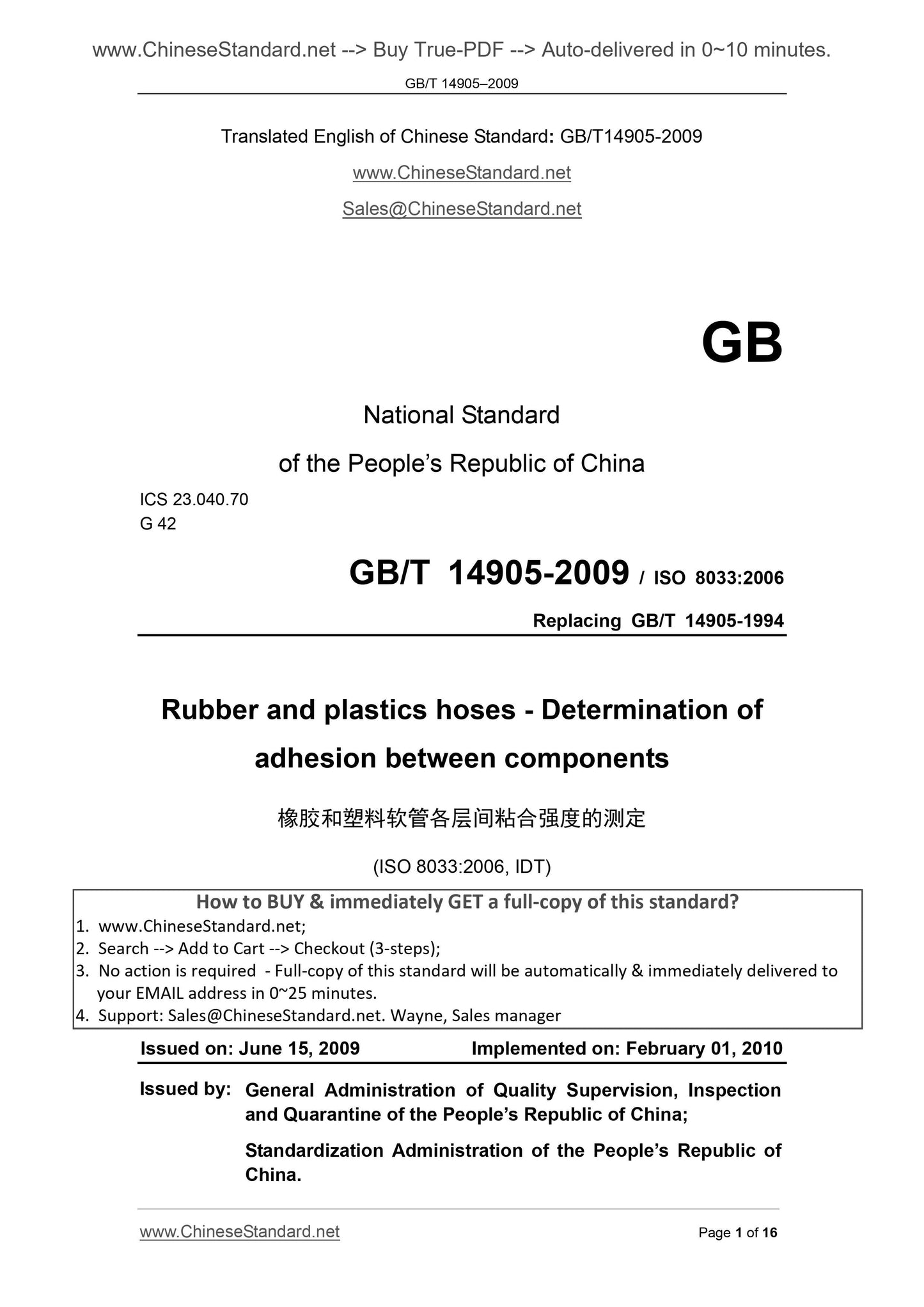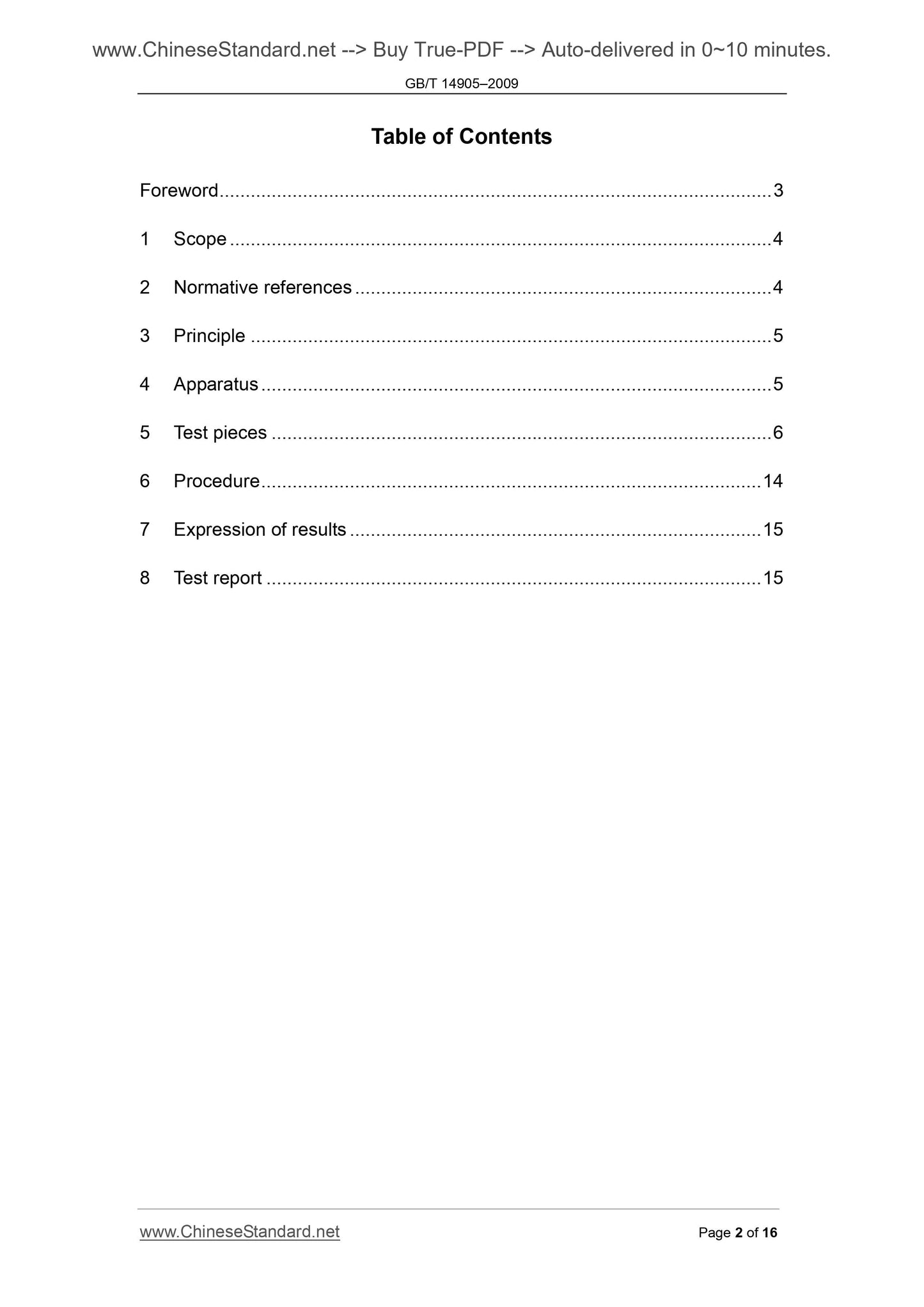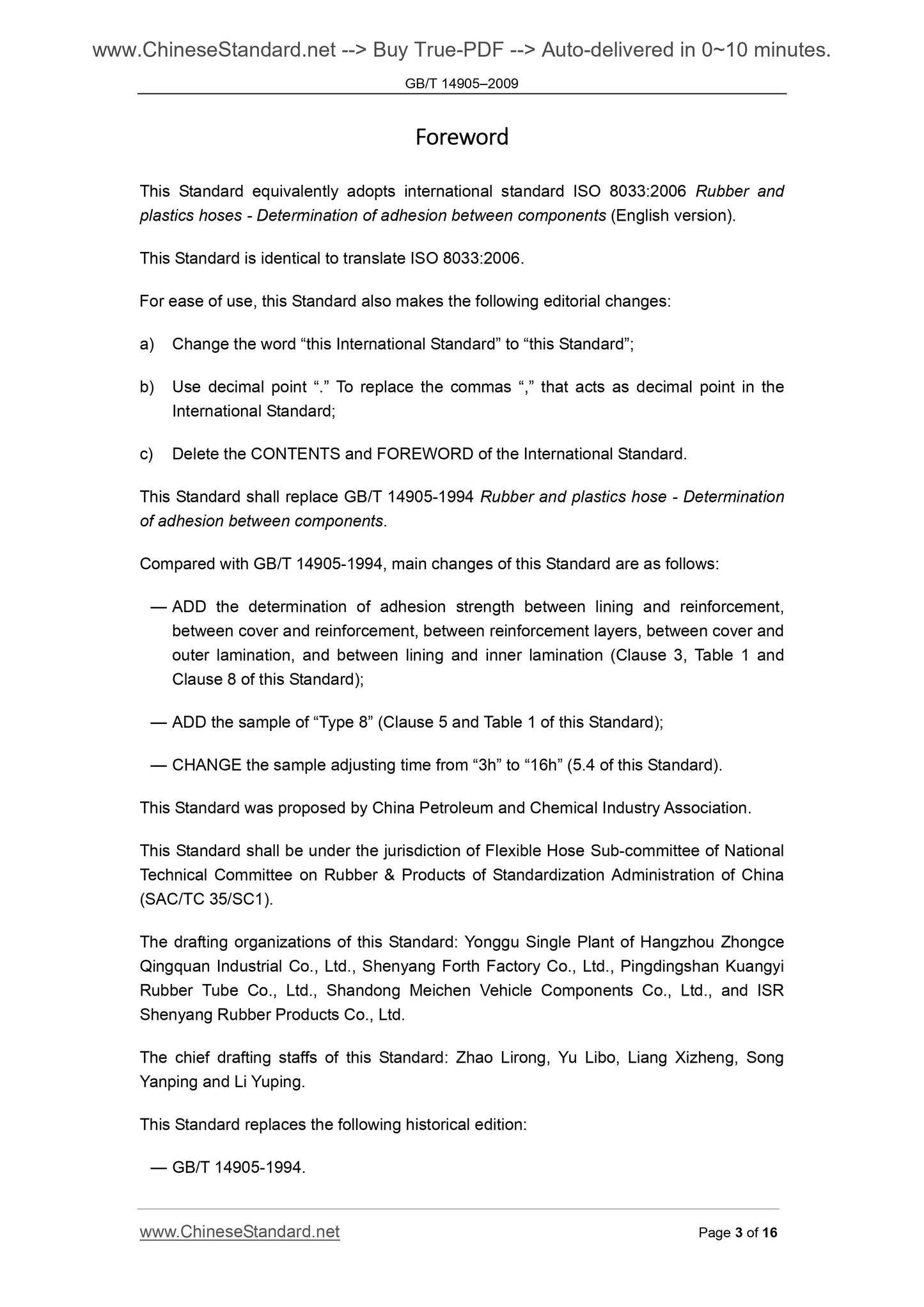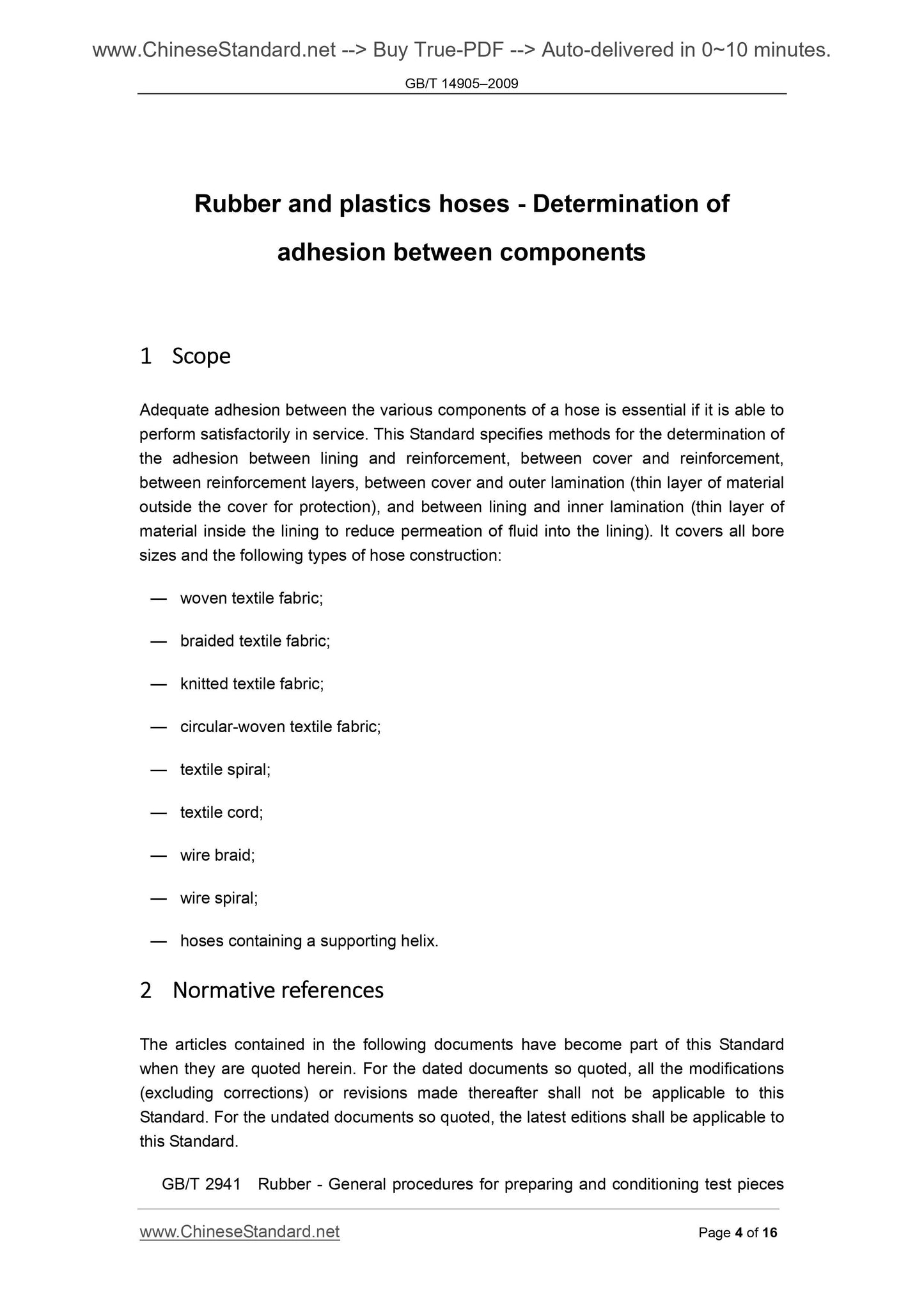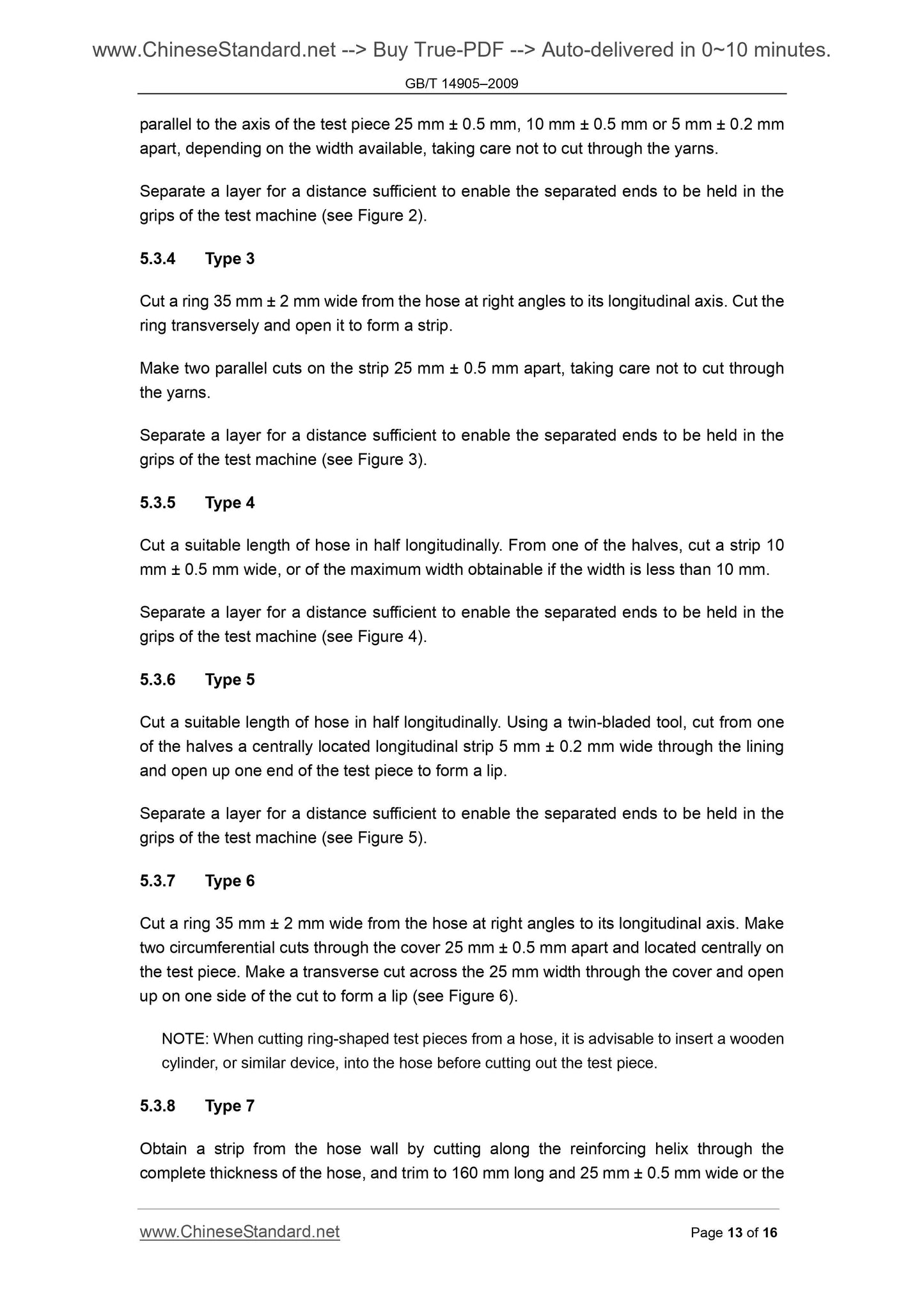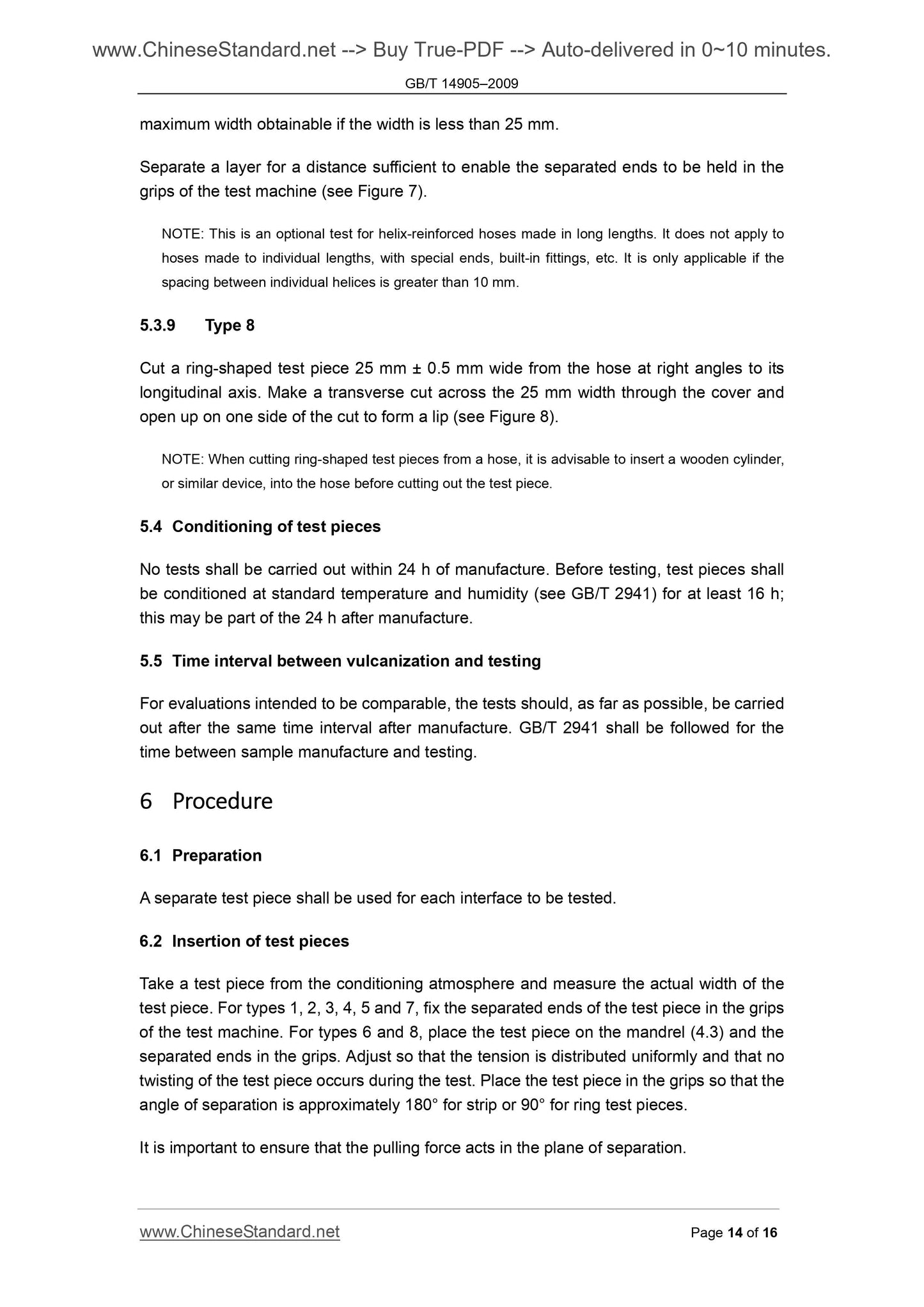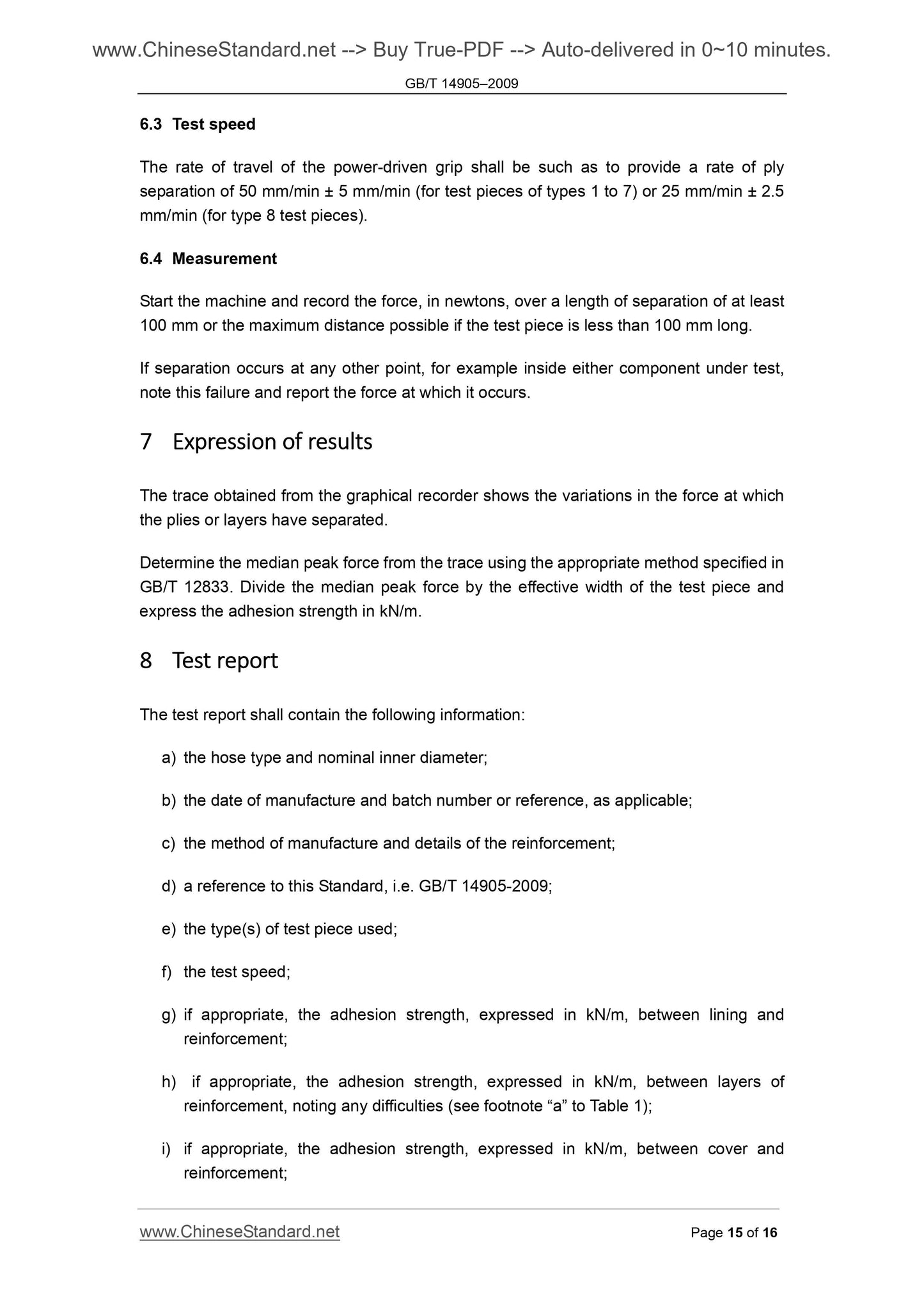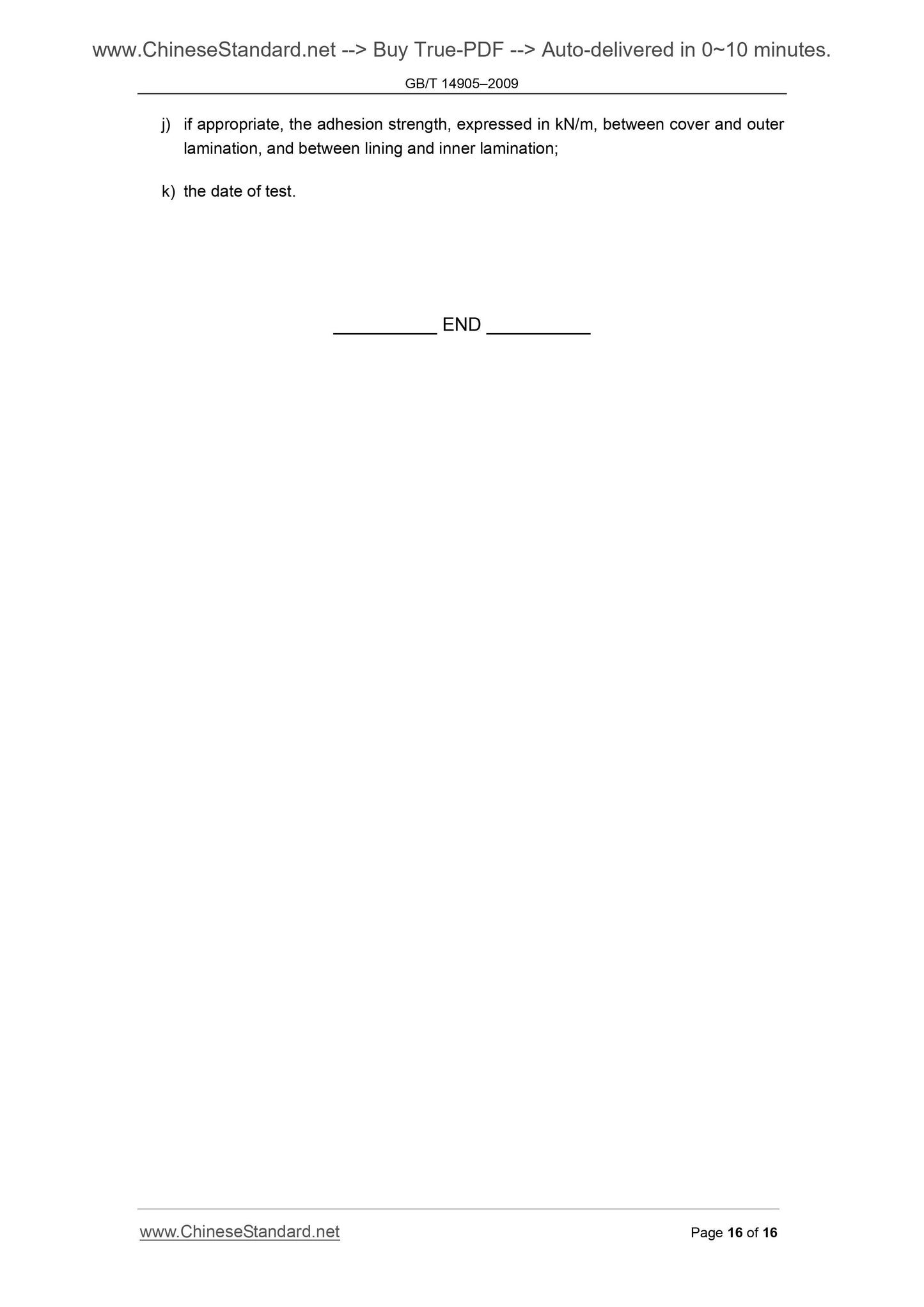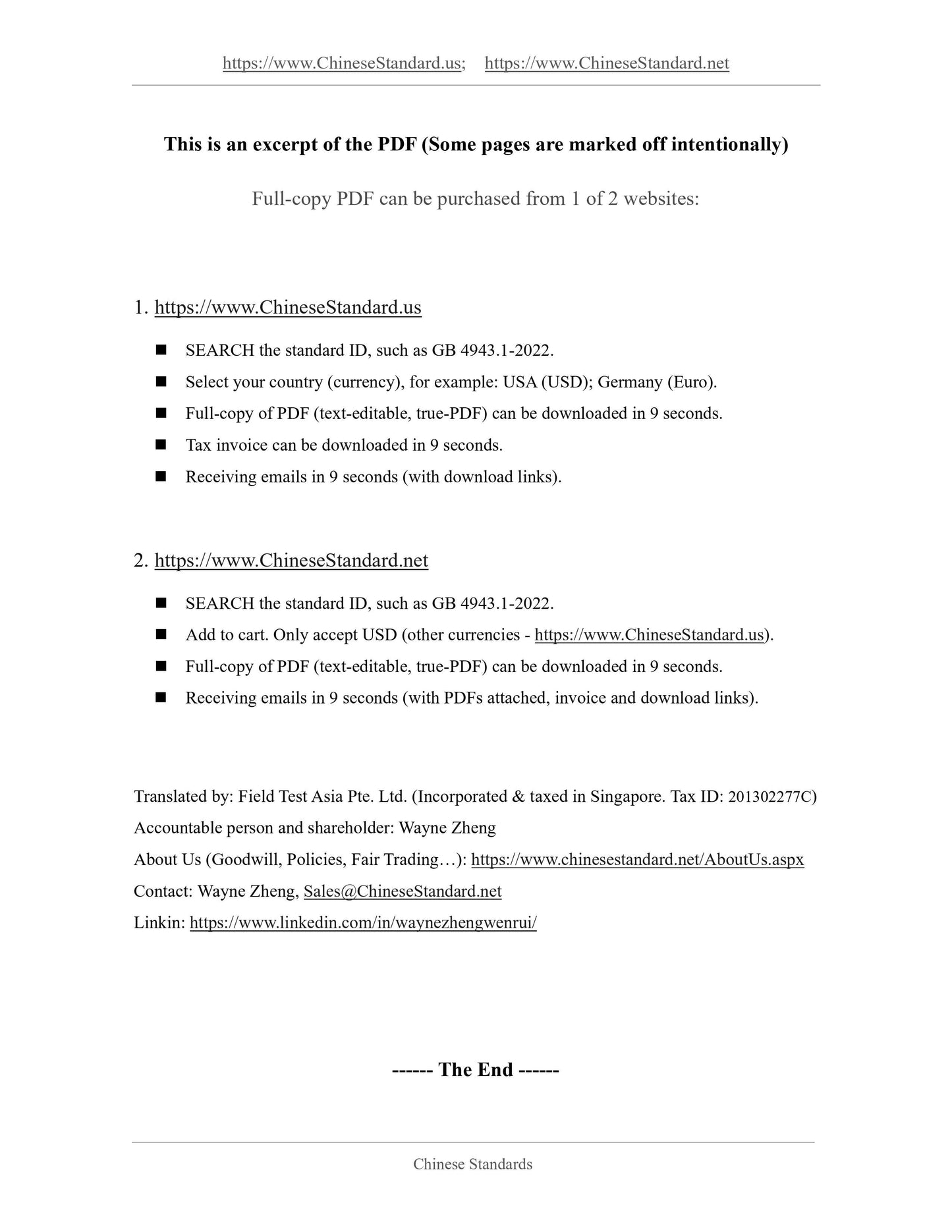1
/
of
9
PayPal, credit cards. Download editable-PDF and invoice in 1 second!
GB/T 14905-2009 English PDF (GB/T14905-2009)
GB/T 14905-2009 English PDF (GB/T14905-2009)
Regular price
$70.00
Regular price
Sale price
$70.00
Unit price
/
per
Shipping calculated at checkout.
Couldn't load pickup availability
GB/T 14905-2009: Rubber and plastics hoses -- Determination of adhesion between components
Delivery: 9 seconds. Download (and Email) true-PDF + Invoice.Get Quotation: Click GB/T 14905-2009 (Self-service in 1-minute)
Newer / historical versions: GB/T 14905-2009
Preview True-PDF
Scope
Adequate adhesion between the various components of a hose is essential if it is able toperform satisfactorily in service. This Standard specifies methods for the determination of
the adhesion between lining and reinforcement, between cover and reinforcement,
between reinforcement layers, between cover and outer lamination (thin layer of material
outside the cover for protection), and between lining and inner lamination (thin layer of
material inside the lining to reduce permeation of fluid into the lining). It covers all bore
sizes and the following types of hose construction.
— woven textile fabric;
— braided textile fabric;
— knitted textile fabric;
— circular-woven textile fabric;
— textile spiral;
— textile cord;
— wire braid;
— wire spiral;
— hoses containing a supporting helix.
2 Normative references
The articles contained in the following documents have become part of this Standard
when they are quoted herein. For the dated documents so quoted, all the modifications
(excluding corrections) or revisions made thereafter shall not be applicable to this
Standard. For the undated documents so quoted, the latest editions shall be applicable to
this Standard.
GB/T 2941 Rubber - General procedures for preparing and conditioning test pieces
parallel to the axis of the test piece 25 mm ± 0.5 mm, 10 mm ± 0.5 mm or 5 mm ± 0.2 mm
apart, depending on the width available, taking care not to cut through the yarns.
Separate a layer for a distance sufficient to enable the separated ends to be held in the
grips of the test machine (see Figure 2).
5.3.4 Type 3
Cut a ring 35 mm ± 2 mm wide from the hose at right angles to its longitudinal axis. Cut the
ring transversely and open it to form a strip.
Make two parallel cuts on the strip 25 mm ± 0.5 mm apart, taking care not to cut through
the yarns.
Separate a layer for a distance sufficient to enable the separated ends to be held in the
grips of the test machine (see Figure 3).
5.3.5 Type 4
Cut a suitable length of hose in half longitudinally. From one of the halves, cut a strip 10
mm ± 0.5 mm wide, or of the maximum width obtainable if the width is less than 10 mm.
Separate a layer for a distance sufficient to enable the separated ends to be held in the
grips of the test machine (see Figure 4).
5.3.6 Type 5
Cut a suitable length of hose in half longitudinally. Using a twin-bladed tool, cut from one
of the halves a centrally located longitudinal strip 5 mm ± 0.2 mm wide through the lining
and open up one end of the test piece to form a lip.
Separate a layer for a distance sufficient to enable the separated ends to be held in the
grips of the test machine (see Figure 5).
5.3.7 Type 6
Cut a ring 35 mm ± 2 mm wide from the hose at right angles to its longitudinal axis. Make
two circumferential cuts through the cover 25 mm ± 0.5 mm apart and located centrally on
the test piece. Make a transverse cut across the 25 mm width through the cover and open
up on one side of the cut to form a lip (see Figure 6).
NOTE. When cutting ring-shaped test pieces from a hose, it is advisable to insert a wooden
cylinder, or similar device, into the hose before cutting out the test piece.
5.3.8 Type 7
Obtain a strip from the hose wall by cutting along the reinforcing helix through the
complete thickness of the hose, and trim to 160 mm long and 25 mm ± 0.5 mm wide or the
maximum width obtainable if the width is less than 25 mm.
Separate a layer for a distance sufficient to enable the separated ends to be held in the
grips of the test machine (see Figure 7).
NOTE. This is an optional test for helix-reinforced hoses made in long lengths. It does not apply to
hoses made to individual lengths, with special ends, built-in fittings, etc. It is only applicable if the
spacing between individual helices is greater than 10 mm.
5.3.9 Type 8
Cut a ring-shaped test piece 25 mm ± 0.5 mm wide from the hose at right angles to its
longitudinal axis. Make a transverse cut across the 25 mm width through the cover and
open up on one side of the cut to form a lip (see Figure 8).
NOTE. When cutting ring-shaped test pieces from a hose, it is advisable to insert a wooden cylinder,
or similar device, into the hose before cutting out the test piece.
5.4 Conditioning of test pieces
No tests shall be carried out within 24 h of manufacture. Before testing, test pieces shall
be conditioned at standard temperature and humidity (see GB/T 2941) for at least 16 h;
this may be part of the 24 h after manufacture.
5.5 Time interval between vulcanization and testing
For evaluations intended to be comparable, the tests should, as far as possible, be carried
out after the same time interval after manufacture. GB/T 2941 shall be followed for the
time between sample manufacture and testing.
Basic Data
| Standard ID | GB/T 14905-2009 (GB/T14905-2009) |
| Description (Translated English) | Rubber and plastics hoses -- Determination of adhesion between components |
| Sector / Industry | National Standard (Recommended) |
| Classification of Chinese Standard | G42 |
| Classification of International Standard | 23.040.70 |
| Word Count Estimation | 14,170 |
| Date of Issue | 2009-06-15 |
| Date of Implementation | 2010-02-01 |
| Older Standard (superseded by this standard) | GB/T 14905-1994 |
| Quoted Standard | GB/T 2941; GB/T 12833; GB/T 17200-2008 |
| Adopted Standard | ISO 8033-2006, IDT |
| Regulation (derived from) | National Standard Approval Announcement 2009 No.8 (Total No.148) |
| Issuing agency(ies) | General Administration of Quality Supervision, Inspection and Quarantine of the People's Republic of China, Standardization Administration of the People's Republic of China |
| Summary | This standard applies to the determination of the adhesion strength-hose lining layer and enhancement layer, outer coarse layer and enhancement layer, enhance inter-layer, outer coarse paste layer and outer layer (outer layer twisted beyond the protective effect TLC), lining layer and cladding layer (located in the lining layer of the thin inner lining fluid from the lower penetration between). Sufficient adhesion between the layers of the hose is a hose during use basis whether good work. This standard includes all sizes of hose and hose structure contains the following types. |
Share
